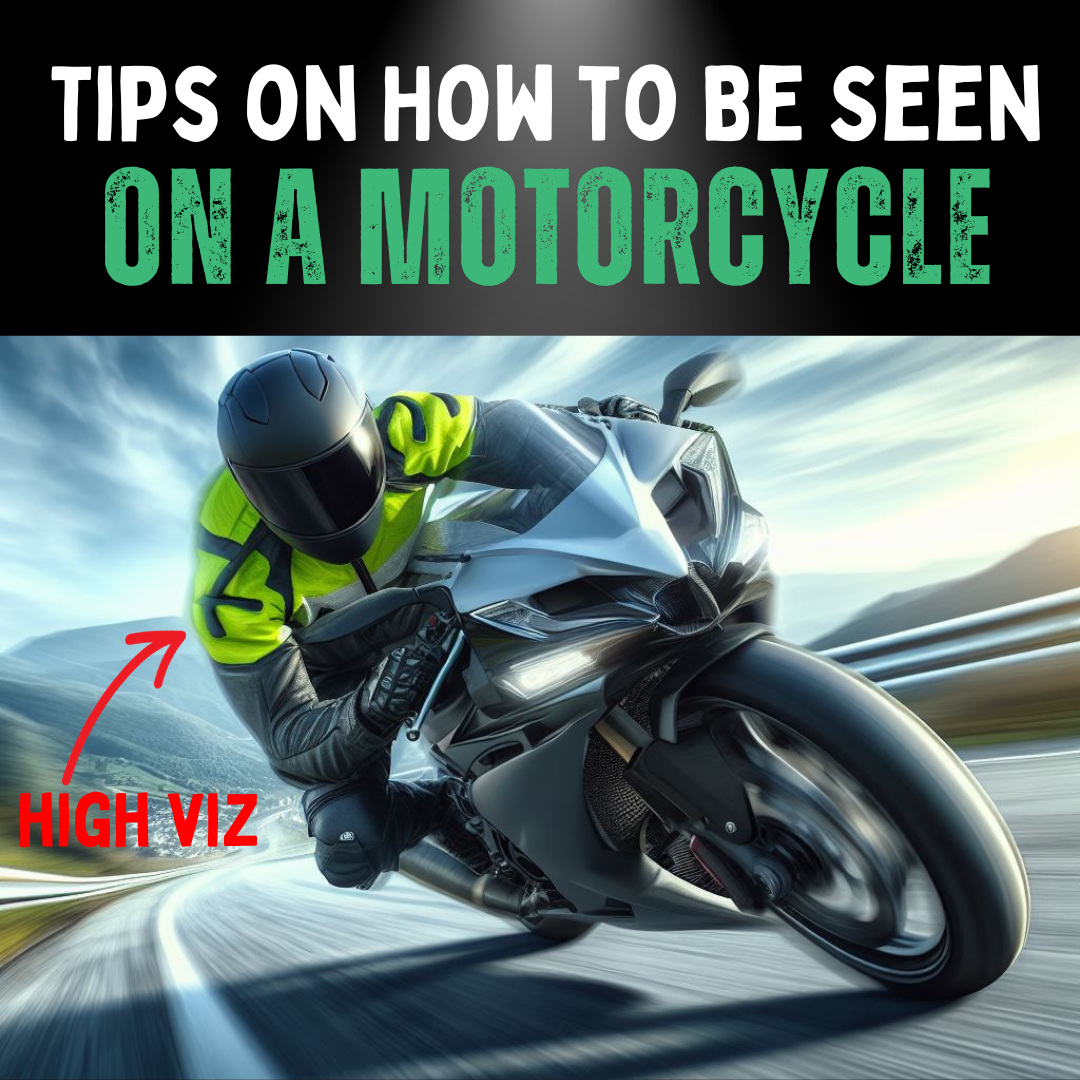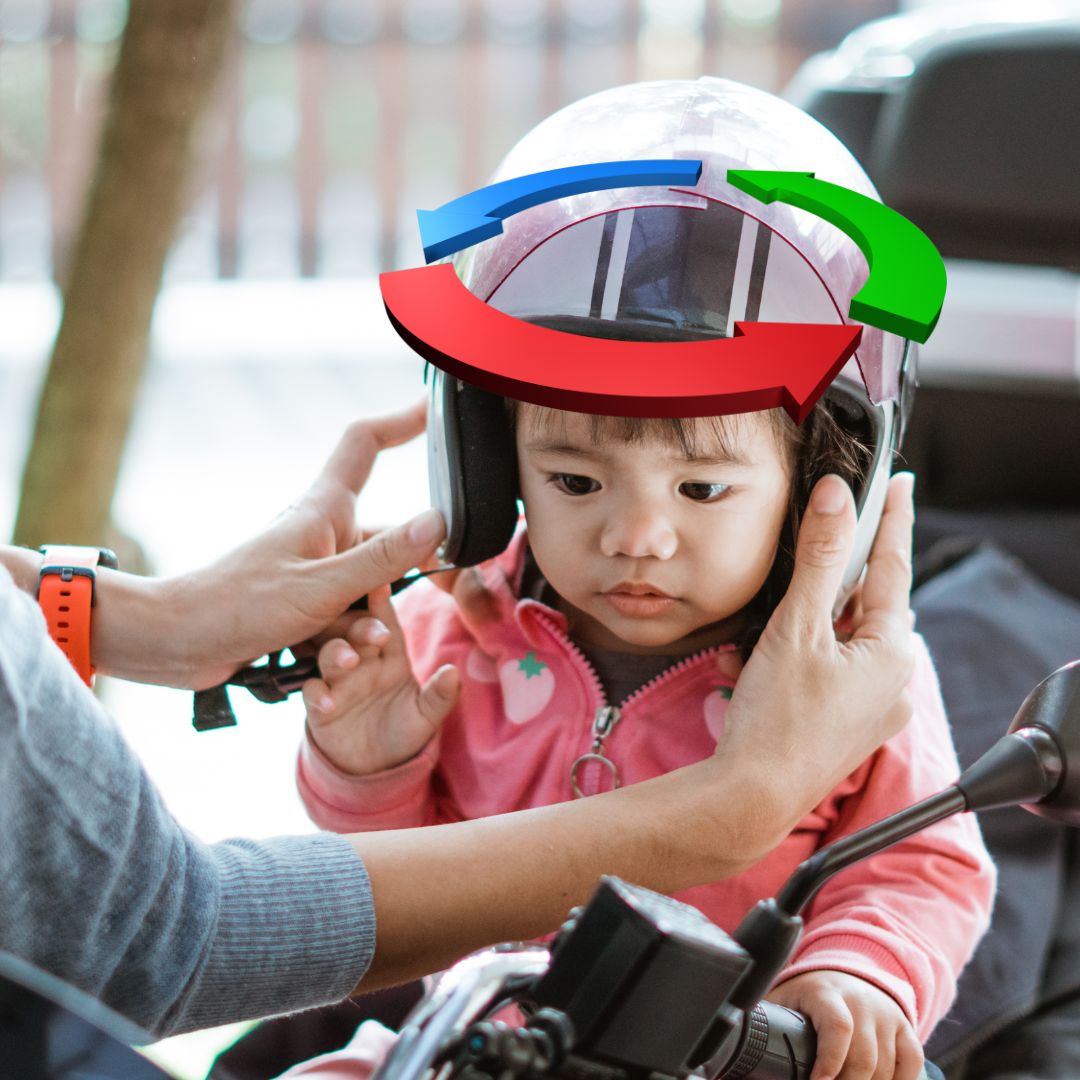
Updated: 17.4.25
Riding a motorcycle brings unmatched freedom and excitement—but it also comes with greater risks, especially when it comes to visibility.
Motorcycles are smaller and more agile, making them easier to overlook in the blind spots of larger vehicles.
Being seen on the road is not about style—it's about safety. These 10 essential tips will help you increase your visibility and stay safer every time you ride.
Gear Up for Maximum Visibility
1. Wear High-Visibility Gear
Bright colours and reflective materials dramatically improve your chances of being seen. Choose hi-vis jackets, helmets, gloves, and boots designed to catch the eye—day or night.
2. Use Reflective Tape
Add reflective tape to your bike's rims, luggage, and gear. It enhances nighttime visibility and helps you stand out in low-light conditions.
Related: How to Ride a Motorbike at Night
Make Your Motorcycle Stand Out
3. Keep Your Lights Clean and On
Ensure your headlight, tail light, and indicators are clean and working. Use your headlight during the day—it makes you more noticeable to oncoming traffic.
4. Add Auxiliary LED Lights
Auxiliary LEDs provide additional brightness and widen your visual footprint. Install them at the front and rear for 360-degree visibility.
Ride Smart, Stay Seen
5. Avoid Blind Spots
Never linger alongside another vehicle. Stay in front or behind to remain visible—especially near trucks, buses, and vans.
Related: Motorcycle Blind Spots: A Comprehensive Guide
6. Maintain a Safe Following Distance
Give yourself space to react. A safe buffer zone also keeps you in clear view of the vehicles ahead and behind you.
7. Tap Your Brakes
A quick tap of your brakes flashes your lights—this alerts drivers behind you without slowing down dramatically.
Use weaving or slight movement before stopping to grab the attention of following drivers.
Adapt to the Environment
8. Ride Cautiously in Poor Weather
Rain, fog, and low light reduce your visibility and that of others. Slow down, ride with lights on, and be extra aware of surrounding traffic.

Communicate with Confidence
9. Use Your Horn Wisely
Use short, polite taps of your horn to signal your presence when needed—especially in traffic or when approaching blind corners.
10. Spread Awareness
Support road safety campaigns and share tips with non-riders. When more drivers understand how motorcycles behave, roads become safer for everyone.
Bike Maintenance Tips That Help You Be Seen
- Check Your Lights Often: Always inspect your headlights, taillights, and indicators before a ride. Replace dim bulbs immediately.
- Go for Bikes with LED Lighting: When choosing a bike, look for models with bright, modern lights that enhance visibility.
- Clean Your Light Covers: Cloudy or dirty headlight lenses can dramatically reduce your visibility. Keep them clean or replace if necessary.
Use Colour to Your Advantage
- Bright Gear Works: Neon yellow, orange, and bright red are attention-grabbing colours that stand out in most environments.
- Glossy Finishes Help: Reflective and glossy paint jobs make bikes easier to see, especially in low light.
Position Yourself Strategically
- Own Your Lane: Don’t ride on the edge—ride confidently in the centre or position yourself where you’re most visible.
- Adjust Your Position as Needed: If you're in a blind spot or behind a large vehicle, move to where other drivers can see you.
Anticipate the Unexpected
- Watch Vehicle Body Language: Subtle cues like mirror checks or drifting can indicate a lane change. Stay alert.
- Predict Movement: Be aware of erratic speed changes, sudden stops, or swerving—all signs that a vehicle may not see you.
Conclusion
Your visibility is your shield. From gear and gadgets to road positioning and communication, each step you take to be seen is a step toward safer riding.
Be bright, be bold, and ride with confidence. Because being seen isn’t just a tip—it’s your lifeline on the road.
Get in Touch 🚀
Loved our article on “10 CRUCIAL Tips on How to Be Seen on a Motorcycle”?
Dive deeper into wheely-awesome content at RiiRoo.com!
Need help? Our Live Chat team is always here to assist.






Share:
11 Signs Your Motorbike Tyres Need Replacing (Spot Trouble Fast!)
10 ESSENTIAL Techniques for Proper Motorcycle Braking